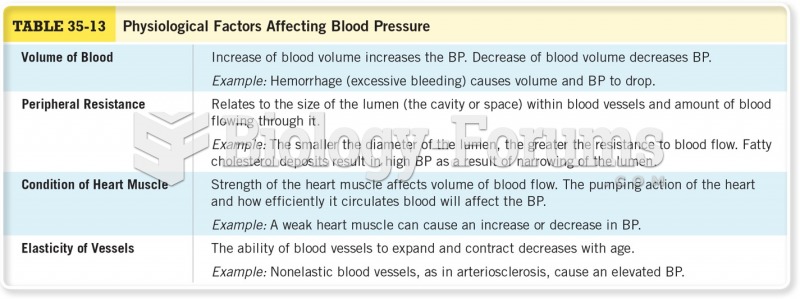Answer to Question 1
Factors that make assessing this patient's actual weight on a daily basis difficult include possible inaccurate measurements, since this patient may have been weighed on different scales with various trips to and from the OR. Also, this patient has had various devices and equipment taken on and off of him (mechanical ventilation, wound VAC changes, drains), which may affect his weight measurements. This patient is currently experiencing edema as per the medical chart, and along with excess fluid from IV fluids and TPN is resulting in a weight that is falsely high. On the other hand, this patient has also had excessive fluid loss with the various wound VACS and drains after his surgeries. Depending on the time of day, the weight can vary based on his clinical course. Because of this, it is important to use one consistent weight for his clinical course, such as his ideal body weight or usual body weight.
Answer to Question 2
First medication: Elavil (25 mg daily)
i. Mechanism:
a. Antidepressant
b. Changes neurotransmitter levels in the brain, particularly serotonin-norepinephrine reuptake inhibitor. Since serotonin may have a role in IBS, changes in serotonin levels resulting from use of this medication may have a secondary effect on IBS.
ii. Drug-nutrient interactions:
a. Cannot take with alcohol; should tell doctor if you drink an excessive amount of alcohol
b. Cannot take with MAOIs
c. Cannot take with epinephrine (may cause high blood pressure)
d. Changes in appetite
e. Constipation
f. Nausea
g. Vomiting
h. Avoid St. John's Wort
i. Avoid excessive amounts of caffeine
Second medication: Metamucil (1 T in 8 oz. of liquid twice daily)
i. Mechanism: Laxative, psyllium bulking agent; soluble fiber forms gel in the colon, retains water, and increases peristalsis.
ii. Drug-nutrient interactions:
a. Diarrhea, cramping
b. Malabsorption of nutrients due to decreased transit time
Lotronex:
i. Mechanism:
a. Specifically for women whose main IBS problem is diarrhea
b. Used to treat diarrhea, pain, cramps, and the feeling of an urgent need to have bowel movements caused by irritable bowel syndrome
c. Serotonin-antagonist. Blocks 5-HT3 serotonin receptor to decrease action of serotonin, reduce abdominal pain, and change motility of the intestine.
d. The indication is restricted to those patients for whom the benefit-to-risk balance is most favorable (may cause severe constipation or ischemic colitis).
ii. Drug-nutrient interactions:
a. Avoid eating grapefruit or grapefruit juice
b. Constipation







